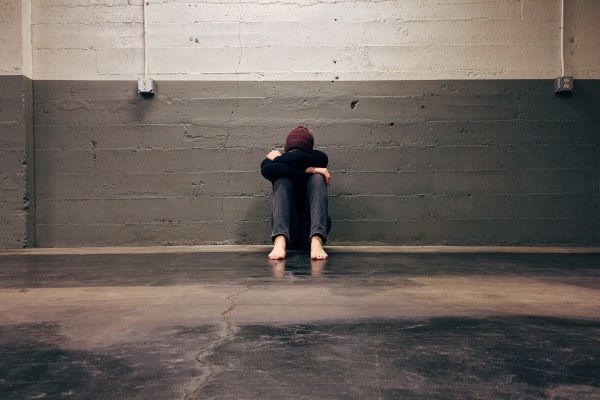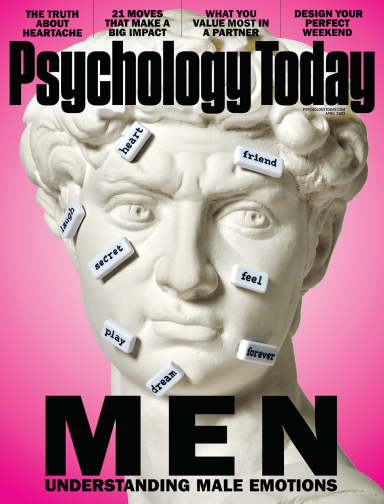
The Psychological Hero
An interview with Israeli Jungian analyst, Erel Shalit, Ph.D.
Posted July 19, 2016
The hero archetype, as the mythologist Joseph Campbell taught, is common to all cultures. Yet the hero is writ especially large in the American psyche. From Gary Cooper facing down a gang of killers in High Noon, to Captain Chuck Yeager (played by Sam Shepherd in The Right Stuff) piloting the X-1 rocket plane to the edge of the atmosphere and becoming the first man to break the sound barrier, it is a myth that animates the telling of our history, and that operates as a background force in all our lives.
What is more—as vividly displayed by Republican candidate Donald Trump, whose invincible, strongman persona has propelled his rise to political power—our hero is an emotional tough guy. Yet according to Israeli Jungian psychoanalyst and author Erel Shalit, author of Enemy, Cripple, and Beggar: Shadows in the Hero’s Path, the modern hero is one who also possesses psychological courage, able to venture into the perilous underworld of the psyche, and to face the shadows of fear, anxiety, or weakness. Indeed, Shalit writes, “the Hero-myth is the central myth of Jungian psychoanalysis,” because for Jung the hero’s “grand opus” concerns the relations with the unconscious. In this interpretation, the “hero goes forth into the netherworld of the shadow, in spite of being threatened by the monsters that lurk in the darkness of the unconscious . . .”
In the following interview, Shalit elaborates further on the psychological function of the three rejected figures that shadow the hero’s outer quest, as well as how heroes are those who go in the opposite direction of convention. We also explore these inner figures as they arise in our nightly dreams and during the therapeutic process (including the transference), as well as the psychological significance of American action heroes.
Erel Shalit: [In speaking of the hero] I think it’s important to distinguish the “hero ideal” and the actual hero on the ground. Psychologically, whether male or female, the hero is an aspect of our conscious ego and identity. More important, it is that faculty in our conscious identity that takes the opposite direction.
Pythia Peay: How does the hero take us in the opposite direction?
ES: Jung speaks about personal and collective consciousness, or the layer of cultural conventions, norms, and habits, either in society or in our individual psyche. The superego is a manifestation of that collective consciousness. Now, ego consciousness has a tendency toward laziness: it gets into certain habits, prejudices, and ways of thinking. For example, whenever we come to an intersection, we wait for the traffic signal to tell us whether to stop or go. Most of the time we rely on that signal, without critically observing whether it is valid. Similarly, many supposedly “personal” decisions are made based on social conventions rather than on reflection and depth.
The price we pay for this natural laziness is that we stop thinking independently, critically, or self-reflectively. But the hero, as a faculty of ego consciousness, is the one who goes in the opposite direction. That could be venturing out into the world to explore new ground, or undertaking some creative or political task. The hero, as Joseph Campbell said, either breaks up or departs from the safety of the familiar. To me as an analyst, the hero is primarily that faculty within the ego that turns toward the shadow and explores psychologically those hidden areas in the unconscious regions of the psyche.
PP: You’ve written about three figures—the enemy, the cripple, and the beggar—that you say are the “shadows in the hero’s path.” Can you say more about these figures, and how our encounters with them are part of the heroic journey inward into the unknown realms of the psyche?
ES: Enemy, cripple, and beggar are figurative images that I draw on to evoke certain features of the unconscious. The enemy, for instance, carries our projections. And as such it’s easy to fight the enemy “out there”: because it’s a way to delude ourselves that we can get rid of our own shadow, or the unconscious, unacceptable parts of ourselves. When we confront an enemy “out there” for example, it’s always an “other.” But that enemy inevitably carries our own shortcomings, becoming a detested opponent whom we need to face—as initially we see our own shadow through the image of the enemy.
PP: That’s very hard to do. Can you give me an example of how that works?
ES: I think it works on both individual and collective levels. During the Cold War, for example, both America and the Soviet Union demonized and imbued the other side with evil. We easily see this in other conflicts around the world today. But when each country in a conflict can begin to see the individual face of its enemy, there’s a greater possibility that the enemy can become humanized, and then respective enemy countries can begin to withdraw some of their mutual projections.
This takes place not only on a national level, but in everyday life as well. The neighbor across the street who screams and shouts can easily become a bad “other” whom we might see as an enemy, and who carries the shadow for us unless we start facing it. When I see my shadow in my neighbor, for example, I might feel “this is not me.” And if I feel any doubt, well, that can be easily compensated by anger, rejection, and contempt, which all serve to increase the distance between the other and myself. The alternative is to re-own my shadow and look into those aspects of myself that I don’t want to accept.
PP: Can you say something about the cripple as the shadow of the hero?
ES: The cripple is the name I decided to give to that part of the shadow that carries our weaknesses. I’m sensitive to the fact that using the word cripple is not politically correct. But the cripple appears frequently in fairy tales and in the dreams of those who aren’t physically crippled, carrying those elements within which we experience as crippling—the paradox being that the more we disregard them, the more they cripple us. The hero ventures into the land of shadows in the psyche to encounter those crippled parts of ourselves that we have split off from awareness.
PP: I’ve certainly had dreams with crippled figures, and it’s something I’ve always wondered about.
ES: I’ve also had the cripple appear in my dreams, and I think that variations of this wounded figure are among the more common dream motifs. In real life, we often detest encountering a sense of being crippled: for instance, when in old age we become acutely aware of the limitations of our body and the loss of strength, whether mental or physical. However, it is through embracing our complexes, and in this case recognizing an inner sense of crippledness, that we become human. It’s also tremendously important in the transference that takes place between the patient and the therapist. A critical juncture has been reached in therapy when a patient starts relating to the therapist or the analyst as being crippled, as that’s when the initial idealization begins to break down.
PP: Can you say more about what you mean by the transference in therapy, and how the figure of the cripple enters into the therapeutic process?
ES: When clients come for therapy or analysis, they frequently experience themselves as wounded, crippled, depressed, or anxious. Just the decision to go into therapy is an acknowledgment of those crippled parts of our own psychology, which is important. But while clients may experience themselves as a failure, or incapable, or sick, they often initially idealize the analyst as healthy, clever, and accomplished—and that creates a split. In the beginning, it’s an important stage, because the analyst becomes imbued with healing capabilities. But patients are not truly healed until they can connect to the healing faculties in their own souls. And in order to do that the split between the patient as sick or crippled, versus the analyst as healthy, whole, and accomplished, needs to break down. And that happens when the patient starts to see that the analyst is not that great!
To use an example from my own practice, one of my female patients idealized me far beyond my personal capabilities, beyond anything that I really am. As her analysis progressed, she had a dream in which she was sitting across from me in the analytical setting: but I was sitting on a broken chair, trembling, as if I was very old, sick, and scared. But to discover that I, the analyst, also had parts of myself that were sick and crippled freed her up; she could now withdraw the projection onto me of her own healing abilities.
So for both the analyst and the analysand it’s tremendously important to experience the cripple within, because without that awareness, we remain in a state of projecting these unwanted, shadow sides onto the “other.”
PP: That is so very beautifully said. What about the beggar?
ES: There are different cultural and individual attitudes toward the actual beggar in the street. Some say beggars are an expression of a malfunctioning society. Others refuse to give anything to beggars because they think they should go out and get a job. Another person might say they can never pass by a beggar without giving them something.
But the beggar in the psyche is a figurative way of describing the furthest reaches of the soul. In this sense, the beggar is not someone we need to give something to. He or she is someone who holds the whole world in his or her hands. It’s an aspect within us that is totally free of the social persona, or the face that we present to the world. The beggar is totally rid of that kind of mask. It is an archetypal image of someone or something who holds in his or her hands the key to the “Self,” and to something greater and beyond this world.
PP: You’re almost saying that the beggar, in this inner sense, is a holy person.
ES: The idea of being homeless in actual reality is terrible; I wouldn’t wish anyone to be homeless. But the beggar in one’s soul doesn’t need the kind of home that the ego requires. Again, this reflects the contrast between the inner world and the outer, and how important it is for the ego to differentiate between them, so that inner images aren’t acted out in the real world. The beggar within is beyond everyday reality. In that sense the beggar turns toward something holy, and stands at the gateway to the Self.
PP: So there is no coming to wholeness, or holiness, without these shadow figures.
ES: Right: There are no shortcuts to the Self, to an inner sense of wholeness. Claims of holiness by those who haven’t walked the shadowy paths of the soul are very dangerous, because then the shadow is projected upon an “other,” who becomes an evil to be destroyed. The inner figure of the beggar who faces both the shadow and the Self, like the Roman God Janus, also ensure humbleness.
PP: As an analyst, do you find that’s it difficult for people when they encounter these shadow figures in their dreams?
ES: Yes, axiomatically. Because it involves coming face to face with those aspects of one’s self that the ego doesn’t want to have anything to do with. And that is exactly where we need the hero in this internal sense. Because the hero is that aspect within the ego that undertakes the journey into the shadowland, whether through dreams, or through introspection or reflection. There the hero finds and struggles with the enemy within, and encounters those weaknesses that often take the shape of our complexes.
Do you know where the word complex comes from? It comes from the Latin complectere, and it means “to embrace.” And that’s what we need to do with our complexes—we need to embrace them. But that requires courage. It requires not the hero as an ideal, but the true hero function within us that dares to look at our weaknesses, shortcomings, difficulties, and sense of inferiority.
PP: The word “look” in this process seems important to me, because so often we think of the hero as confronting something in the outer world. Speaking personally, whenever I’ve had a difficult dream or encounter with my shadow, I often don’t want to look at it. I want to look away. Is that why looking at the shadow as it comes up in our dreams is a form of heroism that takes courage?
ES: That’s a wonderful way of putting it! To look inward is also a way of being respectful of our unconscious. Re-spect comes from looking again, so it’s also important to look—and to look again, and to look again. Therefore inner work is no quick matter. And if you want to relate that to American society, American society is one of great speed; as if there is no time to look backwards or inwards or to look twice at something. Great speed can sometimes be very important, but like everything else it has a shadow side. Speed, quite naturally, makes it difficult for us to slow down, and to really look at ourselves, and to digest what we take in. Especially when we look into our shadow, we need to look not once, but at least twice.
PP: In speaking of the “hero archetype,” a popular phrase comes to mind that we use in America, called the “action hero.” These are the mythic superheroes like Superman and Spiderman and other figures that are made into movies and toys. I wonder what kind of name you would give to this opposite kind of hero you’re describing—which is more of a thinking, reflecting hero.
ES: Well, the action hero is of course very energizing, and we need that aspect as well. There is a reason why children and the young are drawn much more to an action hero than a kind of reflective, introspective hero. So I wouldn’t dismiss those young hero figures: they have a place as well, especially during certain stages of life. But if these superhero action heroes are everything, and if all our energy goes in that direction, then we are in great danger.
PP: Because?
ES: Because if we believe in speed, action, and unimpeded progress, then we don’t account for the shadow. And the shadow has to be accounted for in order not to create a world in which the shadow gets projected wholesale onto the other, or unconsciously acted out, rather than something reflected upon. The shadow creates depth and volume; without it, we become shallow. Think of still life paintings: without a shadow, the objects are dead; but without a shadow, they come alive.
I’m not a Luddite, and I don’t want to stop progress. But this tendency to move forward blindly at greater and greater speed has something to do with a cowboy mentality (not necessarily only in America, but wherever there is youthful recklessness). Whether geographically or technologically, this hero is going to speed ahead and conquer new areas. What’s critically needed as a counterbalance is something like a council of elders—just like in old Roman times, when an old man sat in the cart with the hero returning triumphantly from the battlefield, and whispered in his ear “You’re also mortal, calm down.”
PP: You seem to also be saying that, in this way, our inner work confronting the shadow images of the enemy, the cripple, and the beggar changes our relationship to the outer world—maybe even transforming the way we see these actual figures in the outer world.
ES: Essentially you are absolutely right, but I would like to differentiate a bit between these figures, and what happens externally, when we approach them internally.
The enemy, as I mentioned, first appears externally, because we tend to become aware of our shadow by means of projection. So we first see what is detestable and rejected within, when it crystallizes without. Thus, the enemy within represents that which is threatening me from my very own shadow.
After I’ve taken back my projection from the enemy, I have to face what I detest and reject inside myself, which is typically the painful realization that I am also weak and bad, etc. This is when I encounter the cripple within. To accept the cripple within myself requires shifting from Mars to Eros, or to love and relatedness. And if I’m able to do that then, as you rightly say, I will be more compassionate and able to accept weaknesses in the other person. In fact, the more I am in touch with my inner cripple, the more I will be able to respect the person who is visibly crippled, whether physically, psychologically, or otherwise handicapped—seeing them more as a person, and less as a label. So this is the compassion that helps one to become freer from one’s phobias and prejudices.
PP: And regarding the beggar?
ES: The internal beggar is similar to the beggar in the outer world in the sense that both lack a social persona. But the internal beggar in the depths of our shadow does not beg. The beggar doesn’t ask for anything, and has nothing to offer—unless through reflection I find the treasures hidden in the emptiness of his hand, the emptiness that holds the soul of the world. This is the opposite of the beggar on the street who begs and who asks us to give him something. But if I am reflective about the beggar in my soul, then I will be able to see how in fact the beggar on the street corner holds a fragment of the beggar within. And then I might be able to glimpse the depth and the soul of the world in the beggar’s outstretched hand.
PP: This sounds to me like a spiritual practice of democracy.
Pythia Peay is the author of American Icarus: A Memoir of Father and Country, and America on the Couch: Psychological Perspectives on American Politics and Culture, from which this interview has been adapted and excerpted.
High Noon (1952). A marshall, personally compelled to face a returning deadly enemy, finds that his own town refuses to help him. Starring Gary Cooper and Grace Kelly, directed by Fred Zinneman. Online at: http://www.imdb.com/title/tt0044706/
The Right Stuff (1983). The story of the original Mercury 7 astronauts and their macho, seat-of-the-pants approach to the space program. Starring Sam Shephard and Ed Harris, directed by Phillip Kaufman. Online at: http://www.imdb.com/title/tt0086197/?ref_=nv_sr_1 For more about the life of test pilot and retired Air Force Brigadier General Chuck Yeager, see http://chuckyeager.com.
Jung, C. G. Memories, Dreams, Reflections. New York; Random House, Inc., 1961."The Psychology of the Child archetype,” CW 9i, par. 284.
A “complex”: an unconscious, emotionally charged cluster of feelings and fixed ideas, such as a “father complex” or a “victim complex."












![By StefanoRR [Public domain], via Wikimedia Commons Royalty Free](https://cdn2.psychologytoday.com/assets/styles/manual_crop_3_2_600x400/public/field_blog_entry_teaser_image/Screen%20Shot%202016-02-17%20at%2012.17.21%20PM_0.png.jpg?itok=2QpxCEfQ)










